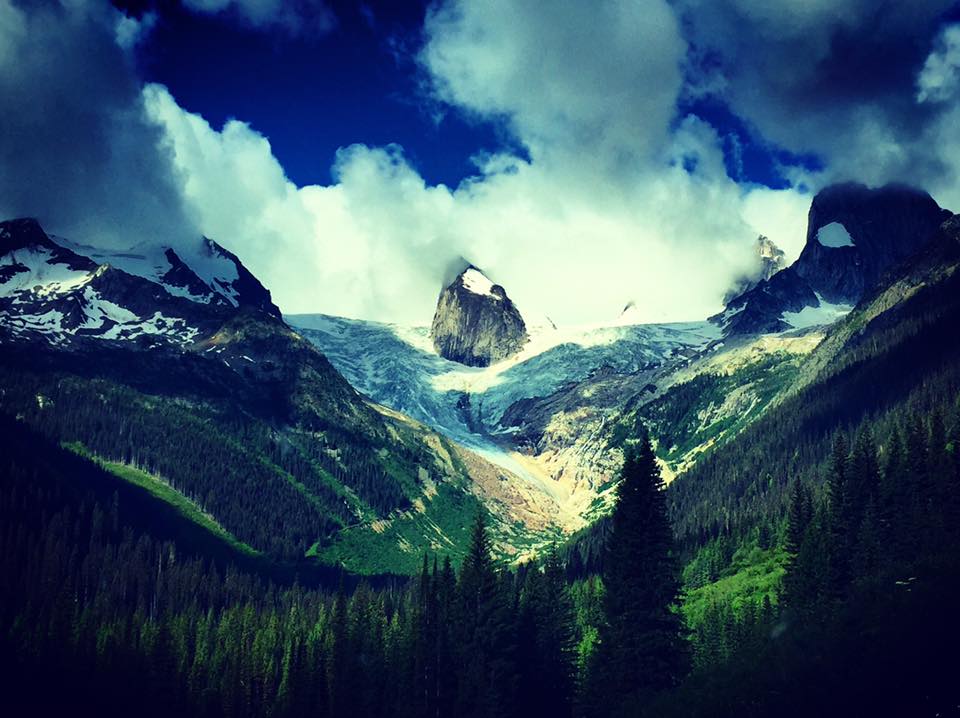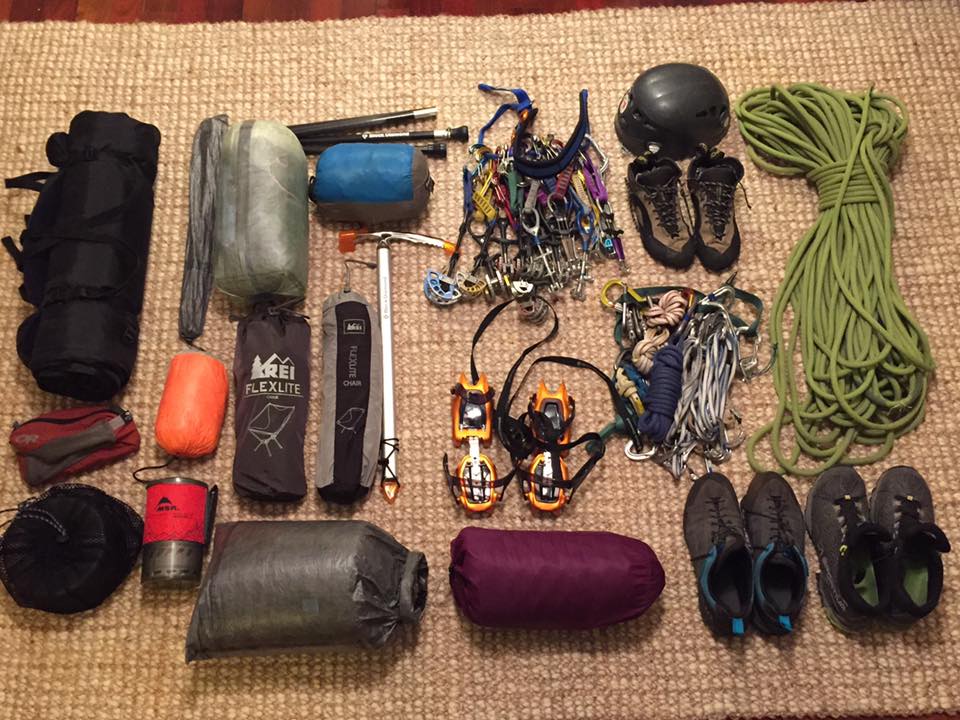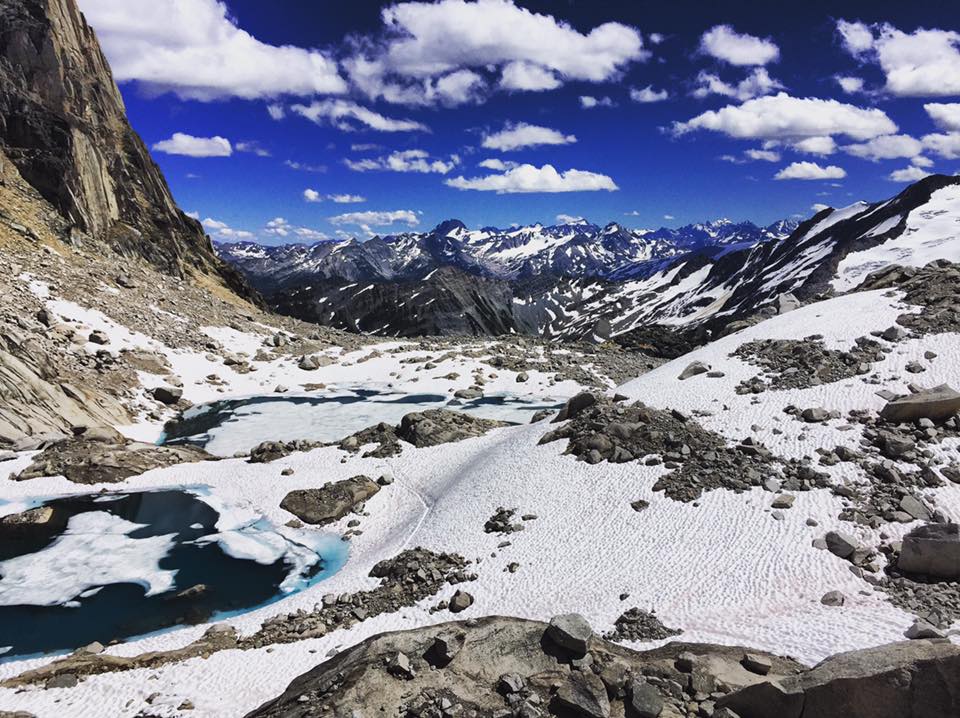Running laps on sport climbs and projecting hard routes definitely equates to a fun-filled weekend. Placing gear and pushing your mental limits on multi-pitch trad climbs is even more fulfilling, but what about during those long summer months when it’s too hot to climb at the crag and you’re confined to pulling on plastic holds at your local climbing gym? Or maybe you’re simply tired of looking longingly at those esoteric mountain peaks?
Alpine climbing is not for the faint of heart. It requires a combination of expert rock climbing technique, navigation skills, glacial travel knowledge, a high level of physical fitness, and solid mental fortitude.
Alpine climbs can take you to the most unbelievable places, snow-capped mountain summits backdropped by lavish sun-splashed peaks and valleys. Alpine climbing rewards you with sights only seen in photographs, and memories that will last a lifetime.
If you haven’t considered alpine climbing before, perhaps this is the year. If you have experience placing gear, hiking long distances with a heavy pack, and glacial travel, you’re already ahead of the game.
It might seem daunting to know where to start your foray into alpine climbing, but the key is to break everything down into small bites and chew on them carefully. Alpine climbing is as dangerous as it is rewarding, you can’t possibly prepare too much. Here are 10 tips for tackling your first alpine climb.
1. Go with an experienced partner
Just like when you first started rock climbing, you hired a guide, listened to a teacher, or learned from a friend. The partnership aspect of climbing is unique to the sport and one of the elements that makes it so rewarding, and this absolutely applies to alpine climbing.
Because of the danger involved with alpine climbing, you’ll want to go on your first excursion with an experienced partner. Two newbie alpinists are a recipe for disaster, no matter how good your technical rock climbing skills might be.
2. Get physically fit
While climbers are generally strong in the muscular sense of the term, there is a huge emphasis on cardio when you’re talking about alpine climbing. Because you’ll be traveling across miles of rugged terrain while wearing a pack before you even get to the base of the climb, you need to make sure your cardio is up to par.
Trail running is a great way to raise your cardiovascular fitness while also learning to navigate rugged terrain.
3. Learn how to pack, and pack light
This isn’t a weekend backpacking trip. You’re going to be climbing with everything you have on your back, so you definitely don’t want to bring the kitchen sink. There’s a fine line here between carrying too much weight and being unsafe, although you should pack light, you shouldn’t forgo emergency supplies such as a first aid kit and an emergency blanket.
Packing for alpine climbing is a skill developed through practice and a slow accumulation of increasingly lighter gear over time. It might mean wearing a lighter harness, carrying a shorter rope, trimming down your trad rack, or purchasing lightweight gear, such as equipment made from Dyneema.
Whether you’re doing a car-to-car ascent or setting up a basecamp for a multiple day excursion will also mitigate what gear to carry.
4. Focus on the distance, not the grade
Unlike a rock climb, an alpine climb consists primarily of approaching and descending, with climbing sandwiched in between. You’re not going to want to push the grades on your first alpine climb, so start with something easy.
You’re not going to be able to climb as hard as you can in the gym wearing a heavy pack, after four hours of hiking, and at 10,000 feet of elevation
Think of it this way: You’re not going to be able to climb as hard as you can in the gym wearing a heavy pack, after four hours of hiking, and at 10,000 feet of elevation.
Focus on the distance of the entire excursion as opposed to the grade of the climb, and start with something short and easy. I would suggest doing a car-to-car ascent your first time out.
The logistics of setting up a basecamp are much more complicated and should be reserved for after you have a few climbs under your belt.
5. Perfect your navigation skills
This encompasses a whole plethora of elements including route finding, backcountry navigation, and basic estimates of sunrise and sunset. The best way to improve your navigation skills? Take a class through your local outdoor shop or guide school, extensively study topos before you set out, and practice old school map and compass skills.
Again, this is where going with an experienced partner is essential. In alpine climbing, staying on route is just part of the challenge.
6. Learn glacial travel, crevasse rescue, and self-rescue techniques
Many alpine climbs require hiking across glaciers to reach their base. You need to know how to safely travel across glaciers and perform crevasse rescue before you set out on your first alpine climb. Also, understanding belay escape and other self-rescue techniques is highly recommended due to the remote nature of alpine climbing.
Although you can handpick alpine climbs that don’t require glacial travel, it’s a skill you’re going to have to learn at some point if you choose to take up the hobby full-time, so you might as well start practicing it from the get go.
7. Execute time management
The number one reason alpinists end up bivying on a route is because they run out of time. Using calculations and a timetable to plan your day in advance will save you from a cold night on the wall.
Estimate the approach, evaluate how long each pitch will take, and then check the descent, is it a walk-off or a rappel?
Past trip reports can be extremely useful for time management purposes. However long you think a climb will take, add an hour for an extra margin of safety. Unexpected events are hallmarks of alpine climbing.
If you haven’t heard the term yet, you’re going to learn about an ‘alpine start’, which means setting out before the sun rises.
This is essential in order to finish a long route before sunset. If you’re caught out in the dark, rappelling, navigating, and finding your way are just going to be that much harder, so make sure you can finish your climb before sunset.
Another option is to bivy at the base of the climb the night before. For your first alpine climb, I suggest picking a route that can easily be done in a half day from car-to-car.
8. Take advantage of weather windows
One of the most frustrating things about alpine climbing is that weather in the mountains can be extremely unpredictable, limiting the times of the year you can attempt to summit.
What can be even more frustrating is having planned a weeklong trip somewhere only to spend the entire time in a tent due to ceaseless rain or snow. But it’s all part of the challenge, so learn to adapt.
In order for the best chance of success, educate yourself on the ideal weather windows for particular areas. Trip reports are again useful for this, as is the website MountainProject. Plan your trip during the best weather window of the year.
For alpine climbing, this is traditionally during the summer months. Also, pay attention to the daily weather while you’re on your trip.
Many remote places without cell service have printed weather reports at park service stations or guide schools. Don’t set out on an alpine climb in the morning if there’s a chance of bad weather rolling in that afternoon, it’s both dangerous and will likely deter you from wanting to try the sport again.
9. Adaptability is key
Anyone who has spent any amount of time out in nature knows that the elements can be fickle.
Alpine climbing more than any other type of climbing requires adaptability. There might be a crevasse that forces you to change your route across a glacier, or a fallen rock on a pitch you have to navigate.
You and your partner might underestimate the time it takes you to approach, or you might simply have to throw in the towel and bivy overnight on a climb because you don’t feel comfortable finding a descent route in the dark.
Whatever the case may be, you need to be able to adapt to changing situations.
Not panicking when things go wrong is a learned skill that takes practice, but if you approach an alpine climb with an open mind instead of a rigid schedule, you’re going to have a better experience.
10. Know when to bail
Ask any alpinist and they’ll tell you they’ve had to bail off of numerous climbs. The longer you’re in the game, the more frequently it’s going to happen.
It might not be that you didn’t prepare or move fast enough, the weather sometimes takes a turn for the worse and you need to get off the mountain for both you and your partner’s safety.
As Ed Viesturs so perfectly quoted, “The top is the halfway point.” Getting back down is essential so that you can wake up to climb another day.
If the conditions aren’t ideal for your descent, it’s safer to bail and try again tomorrow rather than push on.
Good luck, stay safe and have fun!



